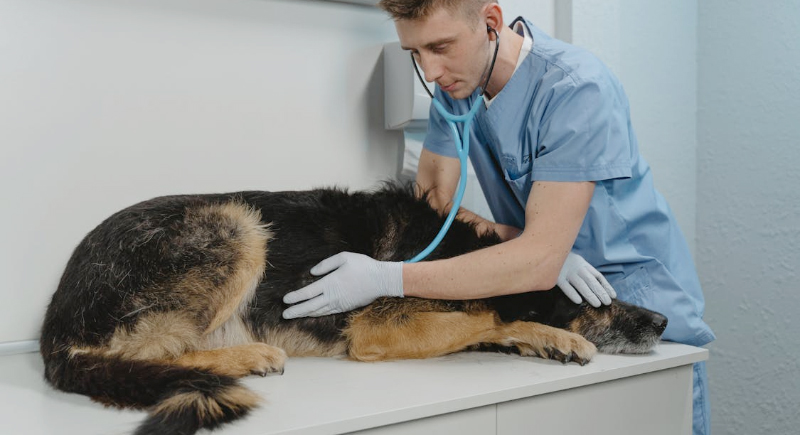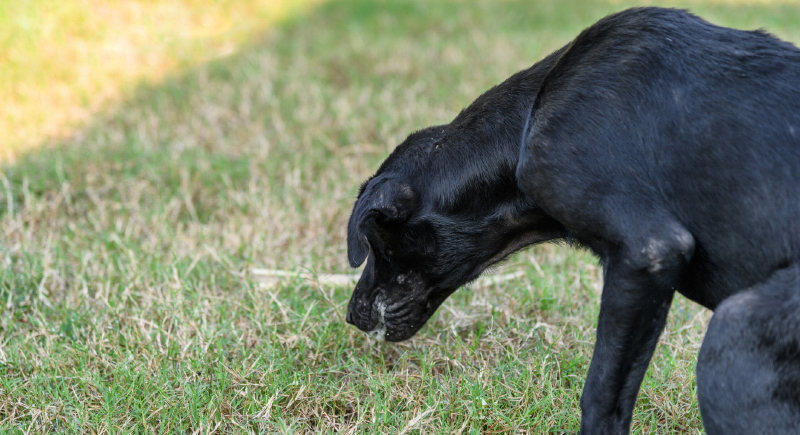Dog Bloat Can Be Fatal and Every Owner Needs to Know the Signs
Dog bloat, known as gastric dilatation-volvulus, or GDV, is a fast-moving medical emergency that every pet owner should be aware of. It usually happens when the stomach is filled to the brim with gas and sometimes twists on itself. This cuts off blood flow and sends the body into shock. The condition can become fatal within just a few hours.
It’s more common in a couple of breeds, but it can strike any dog. Knowing the early signs and acting immediately gives your pet the best chance to survive.
What Happens During Bloat

Image via Pexels/Tima Miroshnichenko
When a dog experiences bloat, the stomach ends up stretching far beyond its normal capacity. In more serious cases, the stomach rotates, traps everything inside and blocks circulation. This twisting also compresses veins that return blood to the heart, and reduces oxygen to vital organs. The buildup of gas increases pressure on the diaphragm, which makes it difficult for the dog to breathe.
As circulation stops, tissues begin to die and lead to rapid shock. Without surgical correction, the condition is almost always fatal. Once the stomach has twisted, emergency surgery becomes the only effective treatment. During surgery, the organ is untwisted, damaged tissue is removed, and a gastropexy is performed to secure the stomach to the abdominal wall, which prevents future twisting.
Breeds and Behaviors That Increase Risk
Large and deep-chested breeds are far more prone to GDV. Great Danes, Weimaraners, German Shepherds, Dobermans, and Standard Poodles are among the most commonly affected. Some smaller deep-chested types, including Basset Hounds and Dachshunds, can also develop it.
A high “height-to-width” chest ratio makes these dogs particularly vulnerable because of the extra space for the organ to move and twist. In addition to this, certain behaviors add to the risk. Our furry friends that eat too quickly, consume large meals in one sitting, or exercise soon after eating face greater danger. Drinking large amounts of water right after a meal can further contribute.
Raised food bowls, once believed helpful, have now been linked to higher rates of bloat in some dogs. Stress and anxiety during feeding are additional triggers.
Recognizing the Warning Signs

Image via iStockphoto/Mumemories
Bloat develops quickly, often with little time to react, which means you need to be well aware of everything that can happen. Early signs include restlessness, pacing, drooling, and unsuccessful attempts to vomit. The dog’s abdomen may appear swollen, hard, and painful, especially on the left side behind the ribs. As the condition worsens, they may show rapid breathing, pale gums, weakness, or collapse.
In critical stages, the swollen stomach can feel tight and hollow when tapped. These symptoms signal an immediate emergency. Internal blood flow stops, which can then be the cause of tissue death and severe pain.
Canines may attempt to vomit repeatedly but produce only saliva or foam. Once collapse occurs, survival without immediate veterinary care becomes extremely unlikely. Every minute counts in these situations. The quicker a dog receives emergency surgery, the better the outcome. Owners who recognize these symptoms early and act without delay often make the difference between recovery and loss.